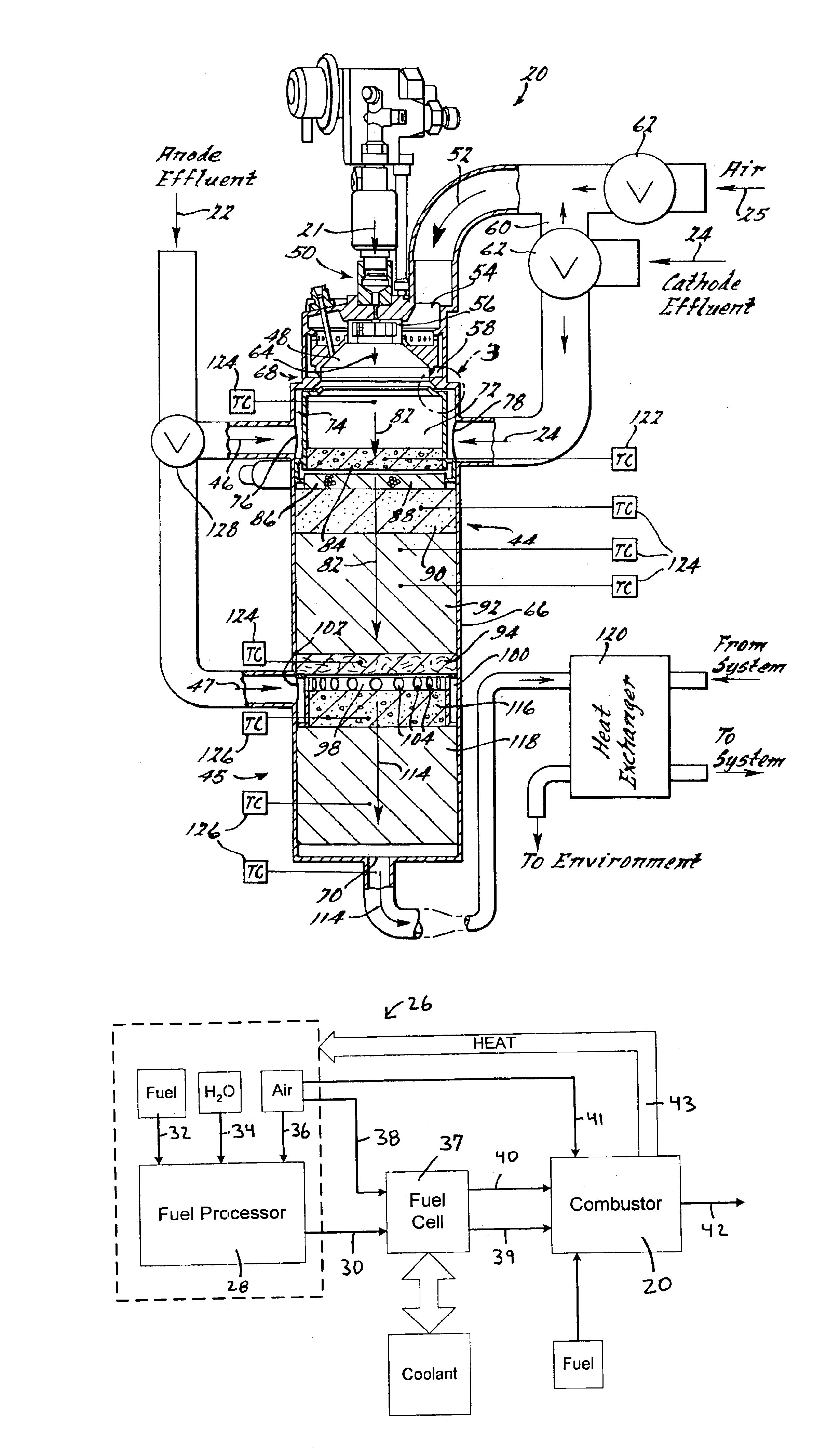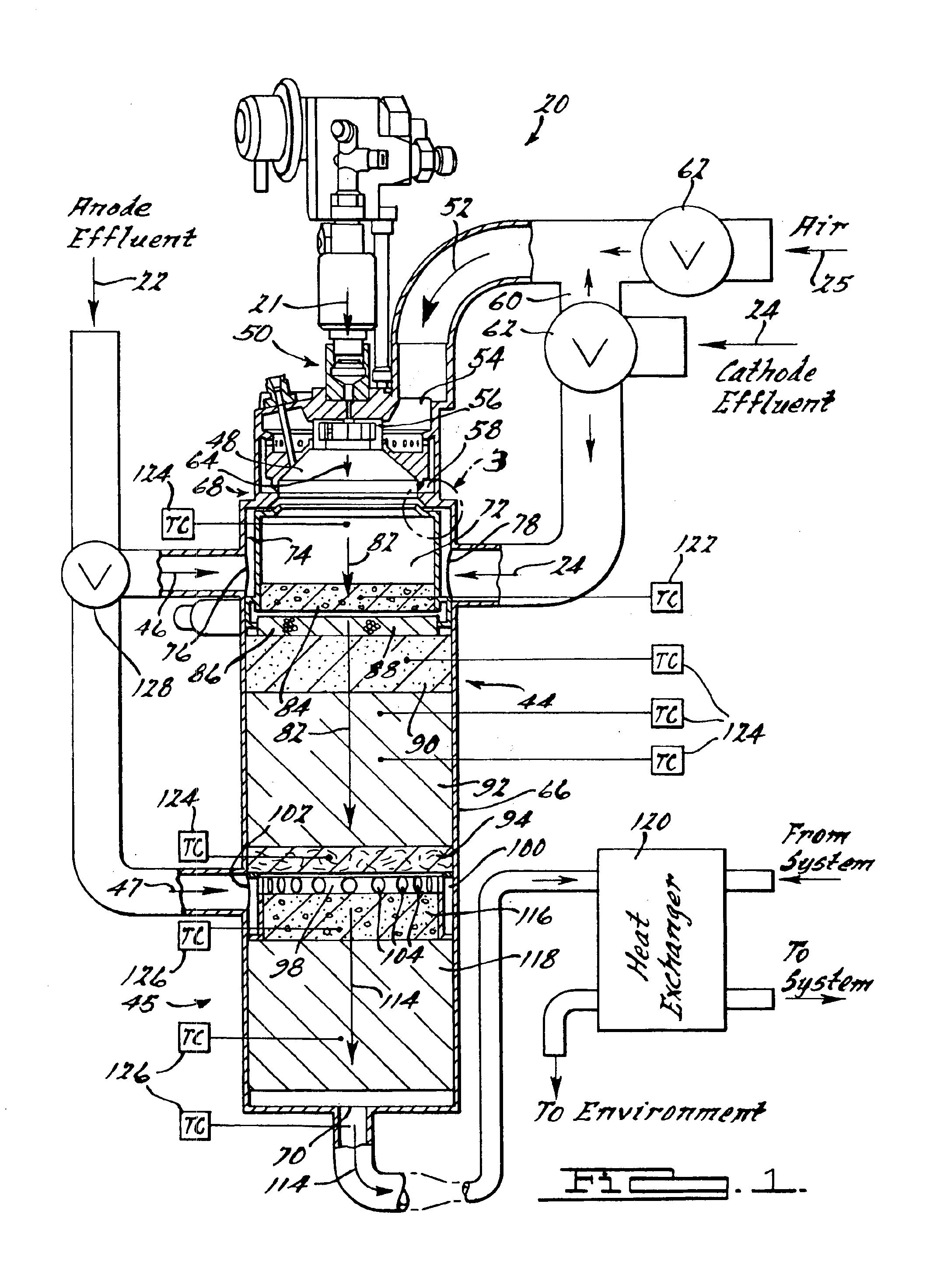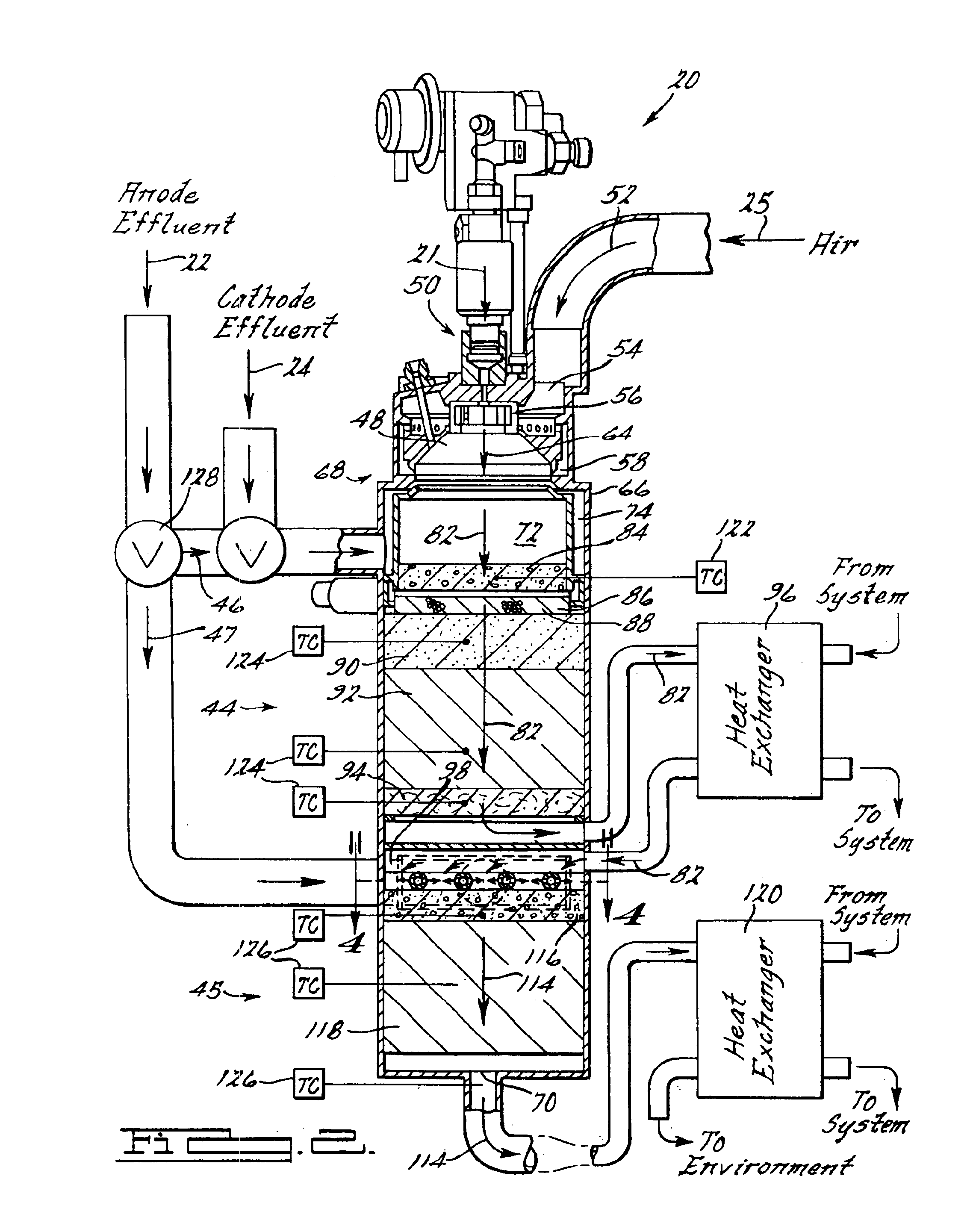Multiple port catalytic combustion device and method of operating same
a combustion device and multi-port technology, applied in the direction of combustion types, lighting and heating apparatus, furnaces, etc., can solve the problems of combustion device damage, combustion device damage, and effluent exhausted from the power system, and achieve the effect of reducing the cost of operation
- Summary
- Abstract
- Description
- Claims
- Application Information
AI Technical Summary
Benefits of technology
Problems solved by technology
Method used
Image
Examples
Embodiment Construction
The following description of the preferred embodiments is merely exemplary in nature and is in no way intended to limit the invention, its application, or uses.
Shown in FIG. 1 is a combustor 20 in accordance with the principles of the present invention can catalytically combust liquid fuel 21, anode effluent 22, or liquid fuel 21 in combination with anode effluent 22. The combustor 20 is designed to combust liquid fuel 21 and / or anode effluent 22 catalytically with an oxidant, such as cathode effluent 24 and / or air 25 while maintaining a controlled combustion process. By controlling the combustion process, the temperature throughout the combustor 20 can be controlled, different heat loads placed on the combustor 20 can be met, and flammable or thermal combustion can be minimized and / or prevented, as will be described below. To accomplish this, the combustor 20 is divided into a plurality of stages in which catalytic combustion occurs. Each stage receives a different fuel flow so tha...
PUM
| Property | Measurement | Unit |
|---|---|---|
| temperature | aaaaa | aaaaa |
| homogenous | aaaaa | aaaaa |
| electrical power | aaaaa | aaaaa |
Abstract
Description
Claims
Application Information
 Login to View More
Login to View More - R&D
- Intellectual Property
- Life Sciences
- Materials
- Tech Scout
- Unparalleled Data Quality
- Higher Quality Content
- 60% Fewer Hallucinations
Browse by: Latest US Patents, China's latest patents, Technical Efficacy Thesaurus, Application Domain, Technology Topic, Popular Technical Reports.
© 2025 PatSnap. All rights reserved.Legal|Privacy policy|Modern Slavery Act Transparency Statement|Sitemap|About US| Contact US: help@patsnap.com



